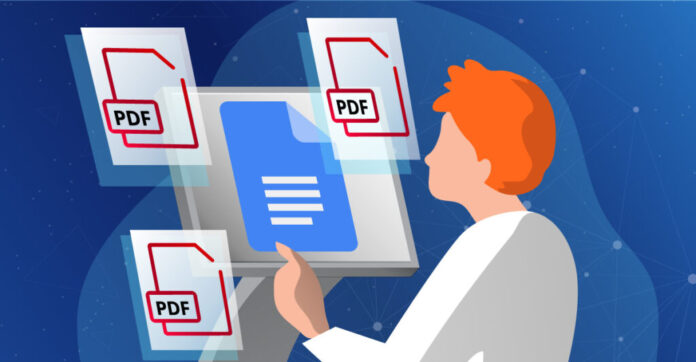In the realm of document processing, two giants have emerged: Google Docs and Microsoft Word. These applications have transformed the way individuals and teams create, collaborate on, and share written content. To make an informed choice between these platforms, a detailed comparison is essential. This essay conducts a thorough examination of Google Docs and Microsoft Word, delving into their user interfaces, collaborative features, offline accessibility, formatting capabilities, integration with other tools, privacy considerations, and pricing models. By the end of this exploration, readers will possess a comprehensive understanding of the strengths and limitations of each platform, empowering them to make decisions aligned with their specific requirements.
User Interface
The user interface is the first point of interaction for users. Google Docs boasts a clean and minimalist design, focusing on content creation. Its web-based nature emphasizes simplicity and user-friendliness, making it ideal for those seeking an intuitive environment. Conversely, Microsoft Word offers a more feature-rich interface, catering to users who demand a broad range of formatting and customization options. The familiar toolbar and ribbon layout may appeal to experienced users, though it might overwhelm newcomers with its extensive array of tools.

Collaborative Features
Real-time collaboration is a crucial consideration for both Google Docs and Microsoft Word. Google Docs, a pioneer in this domain, enables multiple users to edit a document simultaneously, fostering seamless teamwork. This feature proves invaluable for remote teams, students, and professionals engaged in collaborative projects. While Microsoft Word has caught up with real-time collaboration, Google Docs maintains an advantage due to its instantaneous synchronization, allowing collaborators to witness changes in real time without manual saves.
Offline Accessibility
In an interconnected world, offline access to documents remains vital. Google Docs addresses this by allowing users to work offline through its browser extension, facilitating document creation and editing without an active internet connection. Changes made offline sync once a connection is restored. While Microsoft Word is traditionally offline-focused, it now offers limited offline access through desktop and mobile apps, ensuring continuous productivity regardless of connectivity.
Formatting Capabilities
The extent of formatting options greatly influences the professional appearance of documents. Microsoft Word has long been synonymous with extensive formatting capabilities, enabling users to meticulously fine-tune their document’s appearance. From intricate layouts to advanced typography controls, Word caters to users who demand precision in design. Google Docs provides a respectable range of formatting tools, although it may fall short for those requiring intricate design elements. Nevertheless, its collaborative nature often outweighs these limitations for team-based projects.

Integration with Other Tools
Seamless integration with productivity tools can significantly enhance workflows. Google Docs seamlessly integrates with the Google Workspace suite, which includes Gmail, Google Drive, Sheets, and more. This cohesive ecosystem facilitates effortless sharing, communication, and data synchronization. Microsoft Word, as part of the Microsoft 365 suite, integrates seamlessly with Outlook, OneDrive, Excel, and PowerPoint. Users entrenched in either ecosystem might find their decision between Google Docs and Microsoft Word influenced by the overall productivity suite they prefer.
Privacy Concerns
As documents often contain sensitive information, privacy becomes a paramount concern. Google Docs stores documents on Google Drive servers, raising questions about privacy and data ownership due to Google’s data collection practices. Microsoft Word, while not immune to privacy concerns, offers on-premises software versions that provide users with greater control over their data. Additionally, Microsoft has taken steps to enhance data protection, offering encryption options and compliance with data protection regulations.
Pricing Models
The pricing models of Google Docs and Microsoft Word cater to different audiences. Google Docs offers a free version with basic features and storage, suitable for individuals and small teams. The Google Workspace subscription introduces advanced collaboration features and administrative controls, making it appealing to businesses. Microsoft Word, part of the Microsoft 365 subscription, offers various plans for individuals, families, and businesses. The subscription model encompasses other Microsoft tools and services, potentially providing a more cost-effective solution for users seeking a comprehensive suite.

Comparison of Google Docs and Microsoft Word
Google Docs and Microsoft Word emerge as dominant contenders, each with distinct strengths and limitations.
Google Docs excels in real-time collaboration and accessibility, making it a prime choice for collaborative projects and remote teams. Its user-friendly interface and instant synchronization allow users to work seamlessly together, regardless of physical location. For educators, students, and businesses that heavily rely on collaborative work, Google Docs is often the preferred choice due to its efficiency in real-time collaboration.
On the other hand, Microsoft Word’s formatting prowess, integration with the Microsoft 365 suite, and extensive feature set cater to users who demand customization options and a wide range of formatting capabilities. For individuals and organizations that prioritize document design, require advanced formatting, or work extensively with other Microsoft tools like Excel and PowerPoint, Microsoft Word is a natural choice.
Privacy considerations also play a role in the decision-making process. Google’s data collection practices have raised concerns about the privacy of documents stored on Google Drive servers. While Microsoft is not without privacy concerns, it offers more control over data through on-premises software options, which may be appealing to users with stringent privacy requirements.
When it comes to pricing, Google Docs’ free version is a strong incentive for individuals and small teams. However, as collaboration needs grow, the Google Workspace subscription becomes a cost-effective solution, offering advanced features and administrative controls. Microsoft Word’s pricing model is flexible, with plans tailored to individuals, families, and businesses, making it competitive for users seeking a comprehensive suite of productivity tools.
In conclusion, the choice between Google Docs vs Word depends on individual preferences, collaboration needs, privacy considerations, and overall workflow requirements. Both platforms offer distinct strengths and limitations that cater to different user profiles.
Google Docs excels in real-time collaboration and accessibility, making it an excellent choice for remote teams and collaborative projects. Its user-friendly interface and instant synchronization enhance productivity and efficiency.
Microsoft Word, on the other hand, shines in formatting capabilities, integration with the Microsoft 365 suite, and a wide array of features. It appeals to users who demand extensive customization options and rely heavily on other Microsoft tools.

As technology advances, both platforms are likely to evolve, fostering healthy competition that pushes the boundaries of document processing capabilities. Ultimately, the decision between Google Docs and Microsoft Word should be guided by your specific needs and priorities, ensuring that the chosen platform aligns with your goals and enhances your document creation and collaboration experiences.









